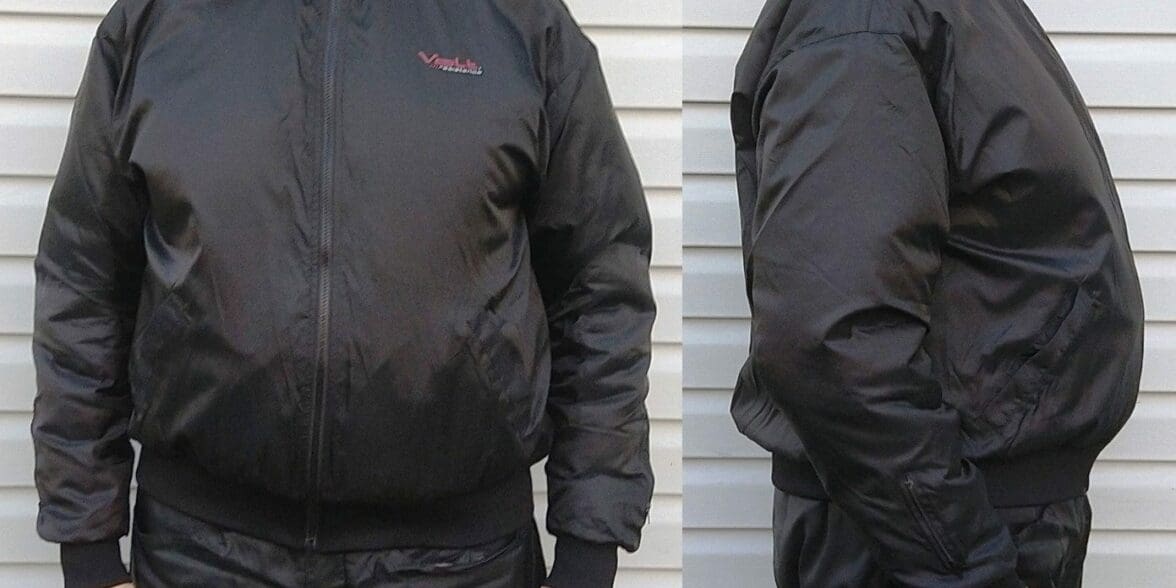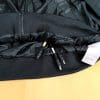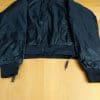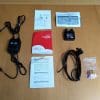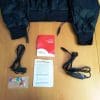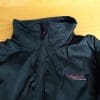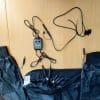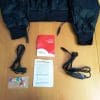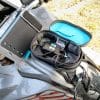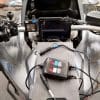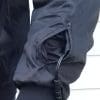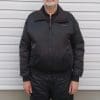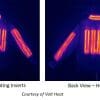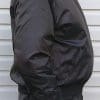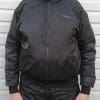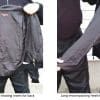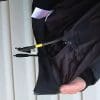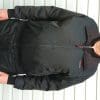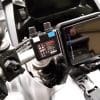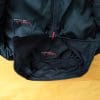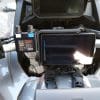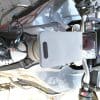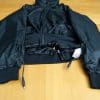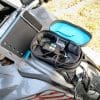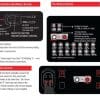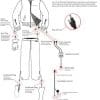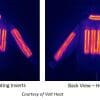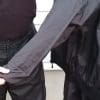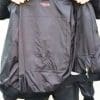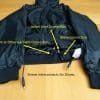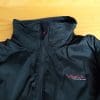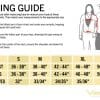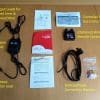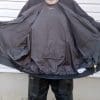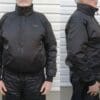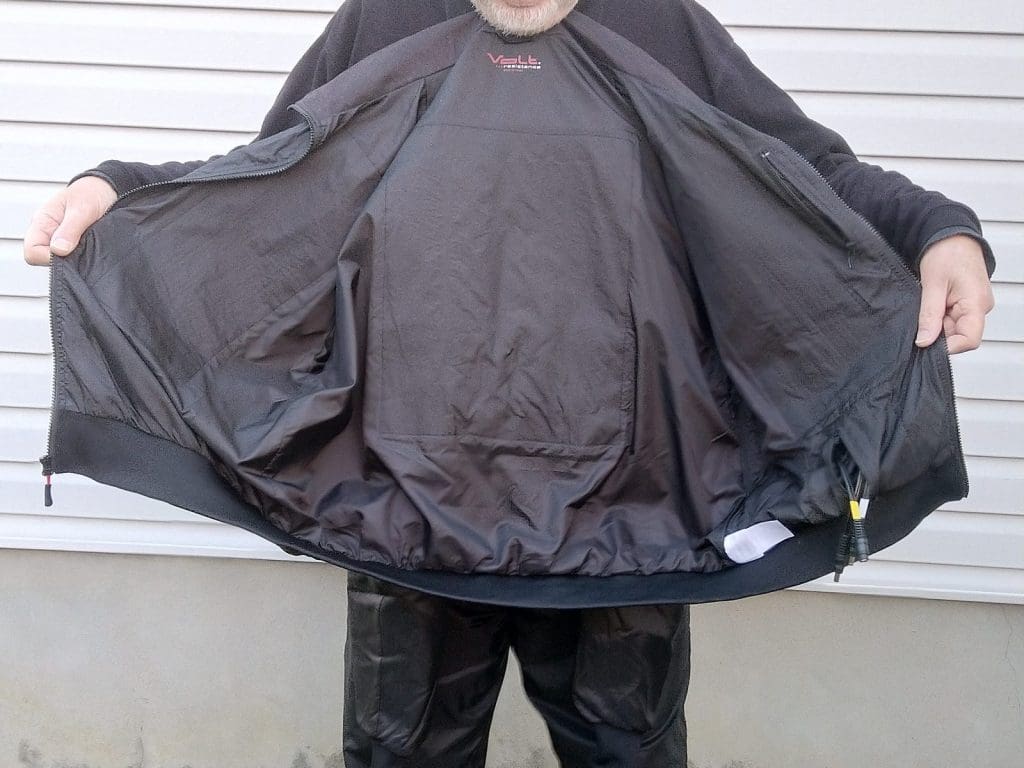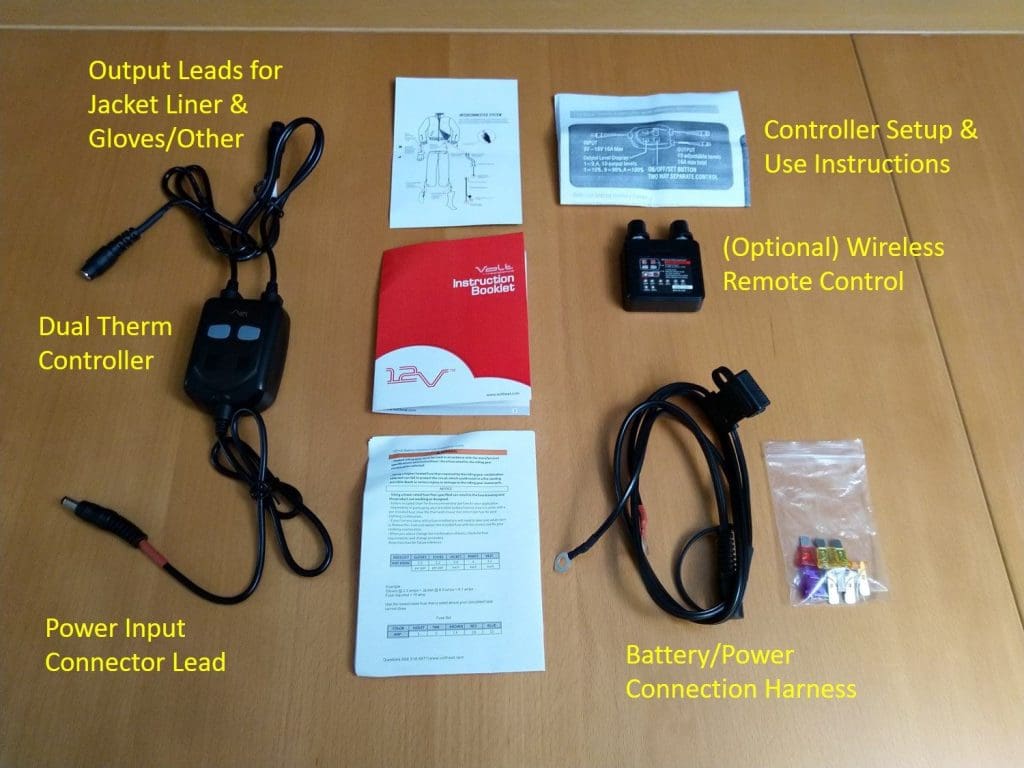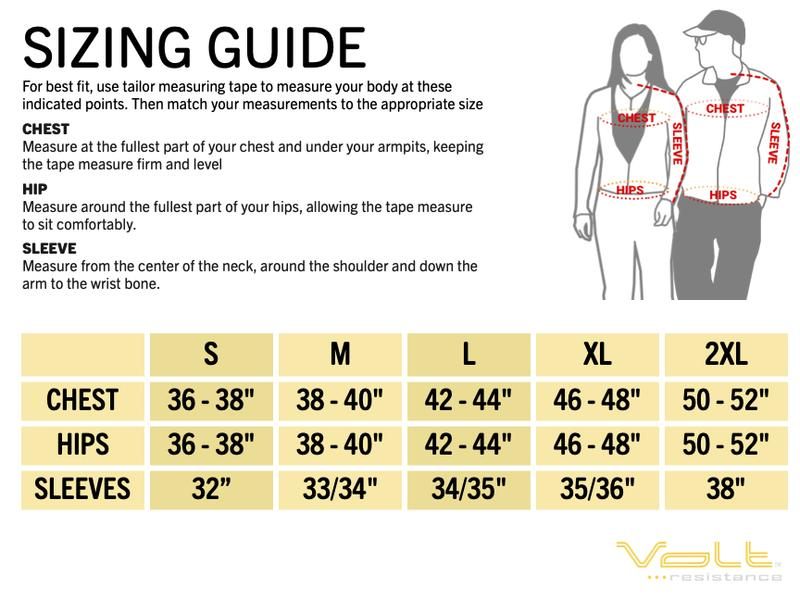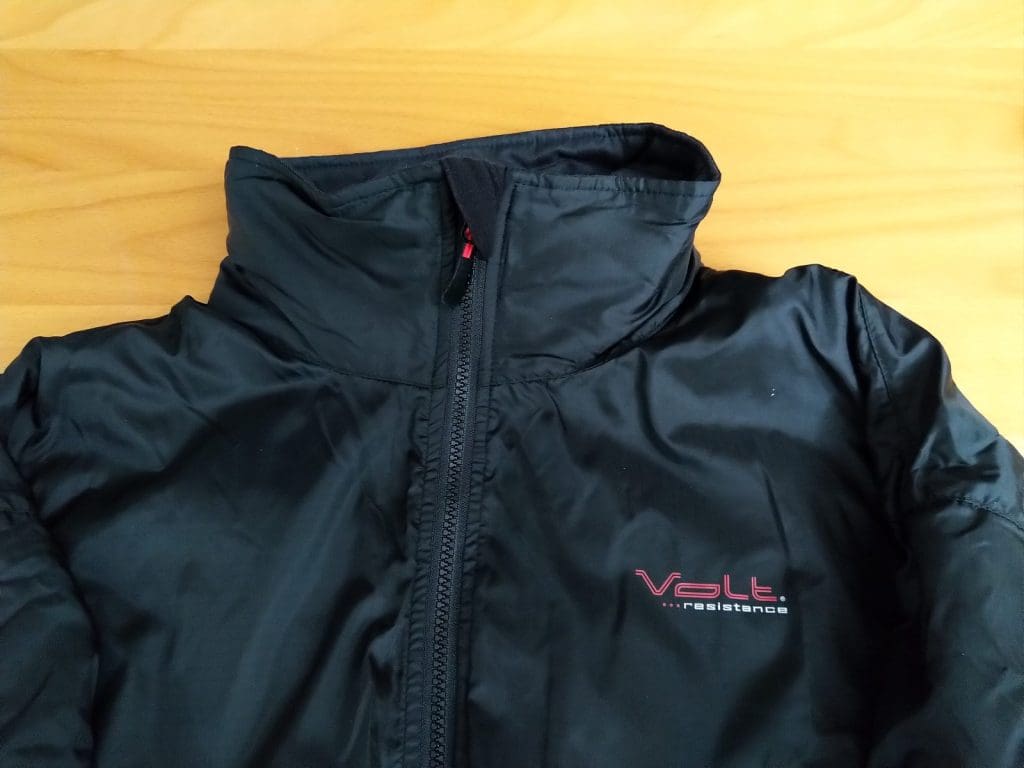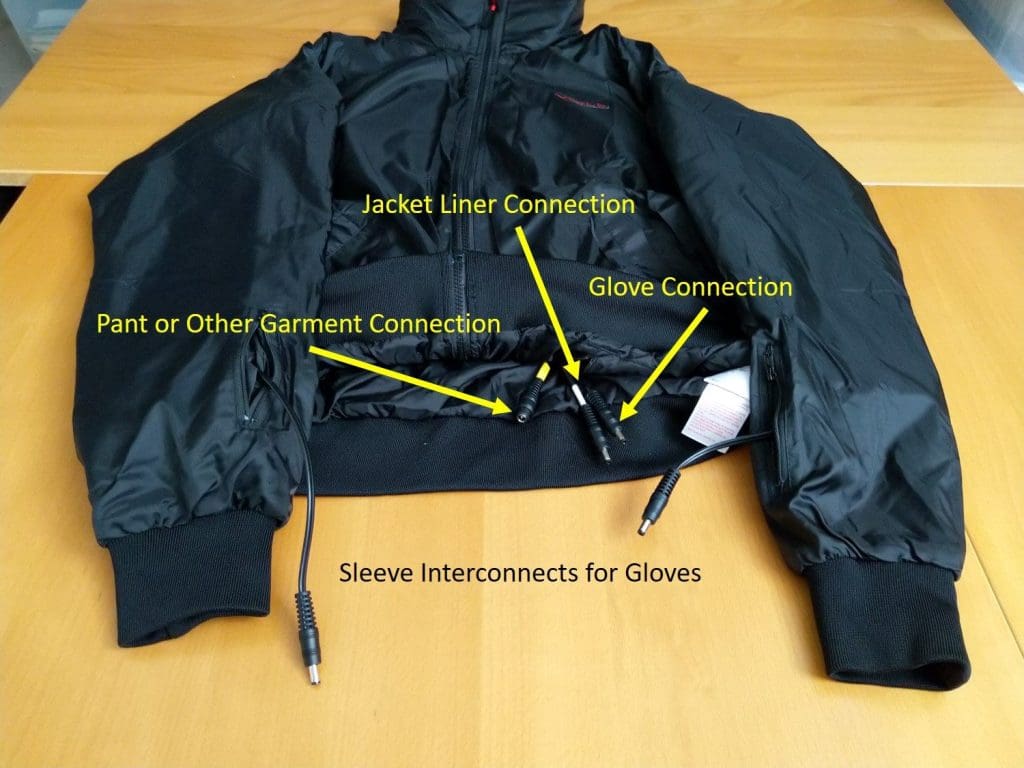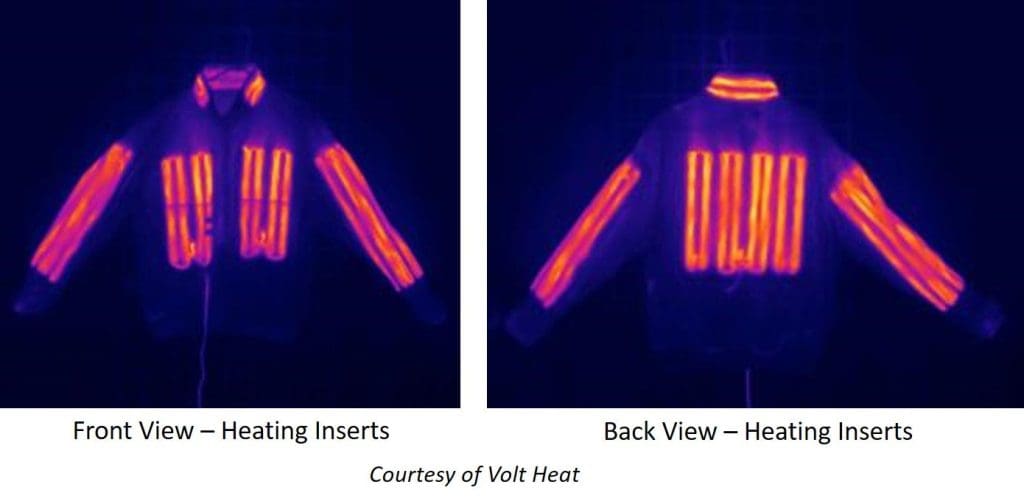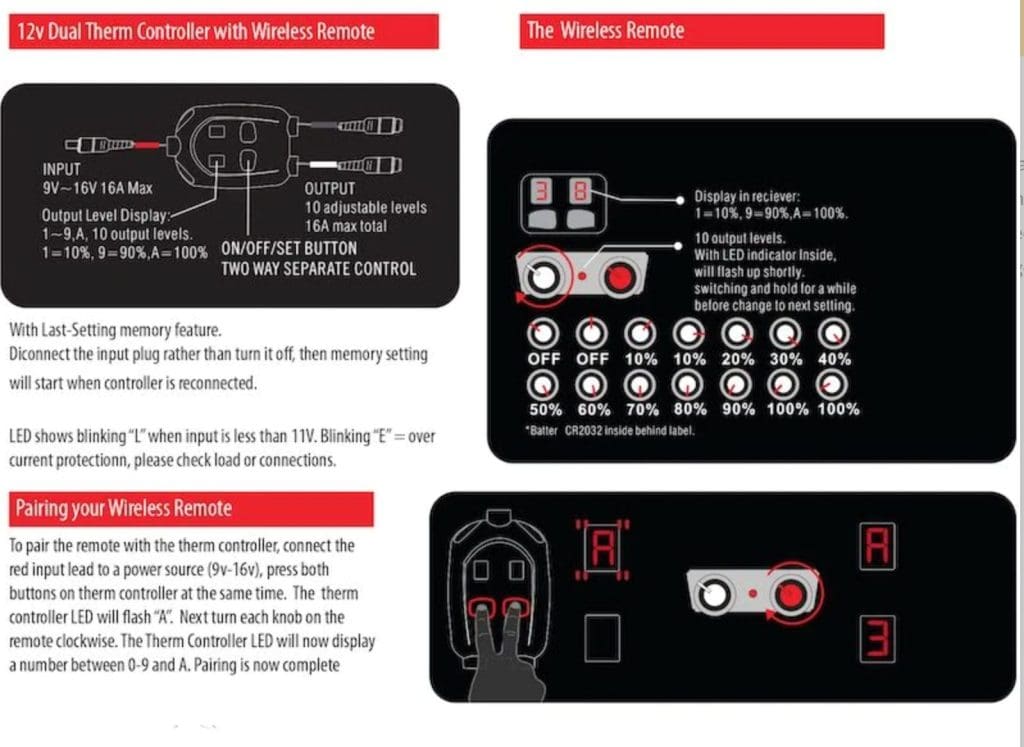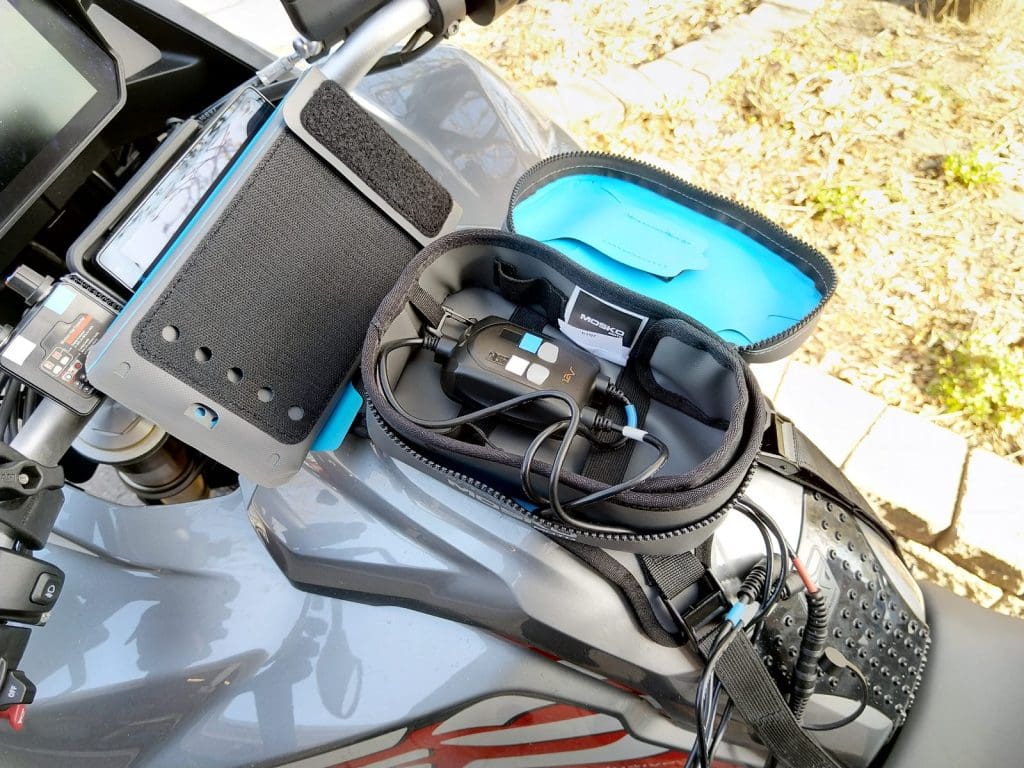Foreword
A big shoutout to Chris at Volt Heat who supplied wBW with the Motorcycle 12V Heated Jacket liner reviewed here, along with the Fusion 12V/7V Dual Source Leather Motorcycle Heated Gloves and Fusion 12V/7V Dual Source Heated Vest already reviewed. I am a warm rider.
Introduction
While warmer spring weather is at hand, some short periods of cooling with cold rain and wet snow still occur, serving to remind us of just where we live. As such the cold weather gear, including all the new Volt Heat pieces, have not yet been put away nor the batteries put on to the charging table for periodic battery maintenance.
And it’s a time of year when, especially for those of us who live in such climates and are avid outdoor enthusiasts including motorcycling, that heated gear become even more appreciated for its wide variety of applications, particularly the portable pieces.
In having used, and reviewed, a fair number of heated gear products over the years, typically 12V wired, all of the pieces have lived up to their respective claims – especially one set of wired glove liners that after almost ten years are still in steady use for cold weather riding.
So we won’t and shouldn’t write off 12V wired heated gear just yet, although in getting a good taste of what is coming while doing the Volt Heat Fusion 12/7V Dual Source gloves and vest product reviews the future of heated gear is looking bright; as we all get older…
This is the last in this series of Volt Heat product reviews and as we move forward in 2020 and through a lot of unknowns, it is kind of appropriate that this review be of a more traditional but highly valued heated gear component – the Volt Heat 12V Heated Jacket Liner.
First Impressions
Like the Volt Heat Fusion 12/7V Dual Source Leather Motorcycle Heated Gloves and the Volt Heat 12/7V Dual Source Heated Vest previously reviewed, the Volt Heat 12V Heated Jacket Liner makes a good first impression when first unpacked from its plastic bag.
The layered look of the garment and the ability to fold it up forming a light packable bundle is another box checked in the first few seconds – a good start indeed.
With the jacket liner hung, the first inspection of its exterior and interior is done, including scoping of the controller and connection leads hidden in the zippered lower-left liner pocket and the small zippered pockets on each sleeve for the glove interconnection harnesses.
There are no loose or pulled threads or section joins askew; the jacket liner has great shape and form and the numerous Zero Layer technology heating inserts are virtually unnoticeable. And in appreciating added weight for the wiring and connectors, it is a lightweight piece.
About Volt Heat
Volt Heat, or H2C Brands, LLC, is a FL based company whose mission and goal is “to develop heated products to help people feel good while looking good regardless of cold temperatures… Nobody likes to be cold.”
The company has evolved, moving from its first product, heated slippers, to an extensive line of wired and portable multi-voltage personal clothing and personal use products Of particular note is their (patented) Zero Layer ® heat system that eliminates bulk while providing efficient heat transfer; more on this technology in the following section.
Volt Heat offers a full range of heated products – indoor/outdoor slippers, light to heavyweight gloves, mitts, single layer and insulated jackets, insulated vests, heated mid and base layer clothing, socks, scarf, travel pillow and heated seat cushions, along with the newer 12/7V Fusion products. A full range of batteries, harnesses and controller accessories is available.
Zero Layer Technology & Connectivity
The Zero Layer approach sees ultra-thin heating panels constructed using tiny (imperceptible) stainless steel fibres woven into the insulating fabric panels. These heating elements are then encapsulated to protect the heating panels and connections from wear and tear for proven durability while eliminating bulk.
Application of the Zero Layer Technology is a layered approach: (1) the top or outer layer is the shell fabric or mix of material (textile and leather) to keep the elements at bay; (2) insulation – advanced material to reflect heat back to the body and create a ‘cocoon’ of warmth; (3) the Zero Layer with its ultra-thin heating wires; and, (4) heat conduction and radiation – these heat transfer methods keep the user warm and help you resist the cold.
Note: Conduction is the direct heat flow through matter resulting from physical contact; whereas Radiant heat is generated by infrared rays that emit towards the body.
All the Volt Heat products are tested at an Institute for Environmental Research so that warmth and efficiency of the garments is both tested and validated for optimal performance.
Research is done under ATSM standards, with a thermal anatomical manikin utilized for precise computer-based measurements. The results of the research activities provide the means to engineer the heating system to each product for optimal performance over a wide range of temperatures.
As identified above the patented Zero Layer ® heating system is engineered for and used between the 3V, 5V, 7V and 12V products, with connectivity across the heated product line provided by: 3V – 1.3mm x 3.5mm coaxial DC connectors; 5V – USB-A; 7V – micro-USB style power connector; and, 12V – 2.5mm x 5.5mm coaxial connectors.
Volt Heat 12V Heat Jacket Liner Breakdown
As with the other two Volt Heat products reviewed, everything needed to get connected and get warmed up is provided. Almost missed (my fault) was the small dual channel wireless controller, an optional accessory that is well worth the minor investment.
Product Pieces
Along with the folded Heated Jacket Liner, Black, Size XL, is a bag containing the 12V (Battery) Connection Harness with inline fuse module and direct connection ring terminals, a small bag of ATC fuses, the Dual Therm Controller and small pocket sized handouts detailing how to connect, interconnect and determine amperage draw for proper fusing and safe operation.
Feature Listing (Compilation)
- 12V (wired) heating source
- Jacket Liner Interconnected System – wired for two output connections
- Dual Therm controller (dual channels allow separates settings for two systems)
- (Optional) Wireless Controller
- Volt’s new patent pending Fusion Heating System
- Zero Layer® Heat System provides efficient heat transfer without the bulk
- Jacket Liner maximum draw is 6.4A (77W) at 12V DC
- Large heating panels located in collar, left and right chest, arms and back for even distribution of warmth throughout upper bod
- 12V coaxial plug and interconnection cables stored in zippered pockets
- Rip-stop coated nylon shell, insulation and nylon liner – form fitted
- Elastic rib-knit on cuffs and bottom (waist) band
- Soft brushed full collar lining
- Two slash-style handwarmer pockets and upper left chest inner zippered pocket
- Zippered harness/plug storage pockets on lower left inner liner and lower left and right sleeves (for glove interconnection)
Size, Fit & Weight
Sizing – based on the sizing chart and advice from Chris at Volt Heat, I decided to stay with my usual XL sizing, acknowledging that sleeve length might be an issue.
But in trying the jacket liner on over the usual base and mid-layer (a light long-sleeved fleece pullover) the sleeve length issue is put to rest – it is perfect. The XL size is just a wee bit large in the torso but with the outer garment in place, there is no bunching of the jacket liner and the integrated (large) heating inserts sit flat, as intended.
Overall Fit – It seems that I am between a Large and XL size regarding the torso, but given the excellent fit everywhere else, including sleeve length, the XL Jacket Liner is a near-perfect fit; no binding or movement issues at all.
Weight & Feel – considering connectors and harnesses, the jacket liner with its multiple heating panels makes for a light comfortable garment. The three leads and connectors located in the lower-left front can be felt a bit when sitting, but they are not intrusive and do not become uncomfortable. The glove connection leads in their sleeve pockets can go unnoticed.
Jacket Liner Design Features
The jacket liner is intended to be form fitting and worn (relatively) close for optimum heating effectiveness. In usually fitting into an XL or 2XL upper garment, the Volt Heat 12V Heated Jacket Liner in XL is just about perfect although a little bit large in the torso, but an overall encompassing fit without pressure and no arm or shoulder movement issues.
The shoulder, upper arm, and neck area is particularly comfortable. The full height (heated) collar is a bit large diameter-wise (typical for my build) but in not always being comfortable with anything putting pressure on my neck/throat area, less a throat mic system, this fit is good.
I really like how the full height collar comes up to or even a bit above the collar of most of the currently worn outer garments, providing added protection and comfort, with warming.
Offsetting that it’s a bit large torso-wise is the fact that sleeve length is perfect; I have long arms and most upper garments in Large or XL are often short in the sleeve length category – but not this garment. And the knit cuffs are a classy comfortable finishing touch as well.
Speaking of layout and finishing, everything is well cut, folded-under, and matched up with clean stitching. Only a couple of loose thread ends have been spotted so far and after lots of use over almost three months, no wear or tear is evident.
The small zippered pocket on the lower-left inner liner houses the three connection leads cleanly (no bulging or sharp edges) while the zippered pockets on the sleeves for the glove interconnect leads are visually seen but not felt.
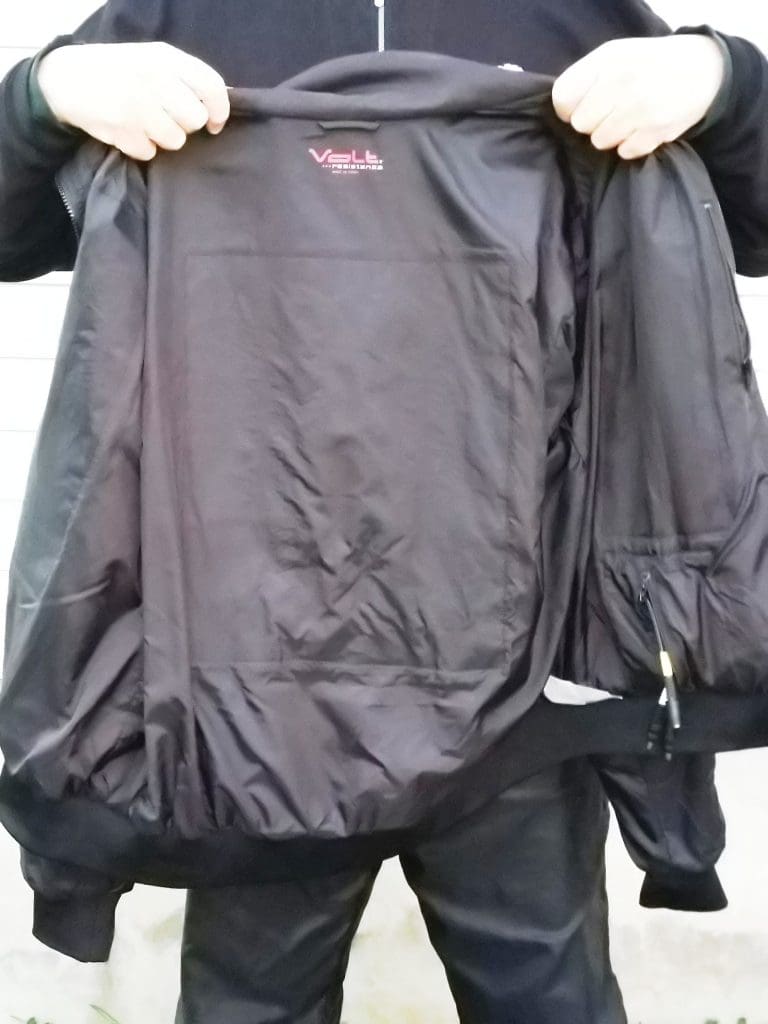
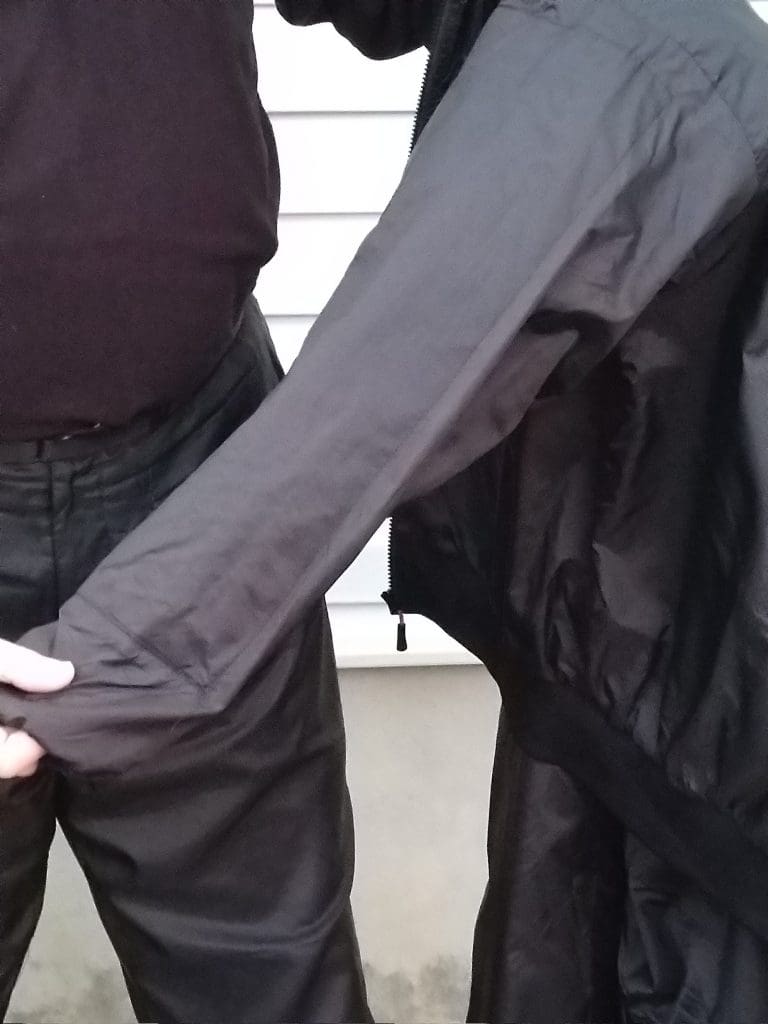
Heated Inserts Layout – the Zero Layer Technology heated insert panels are thin, pliable, and totally unobtrusive. One only need to look at the generous number and strategic placement of the inserts in the jacket liner, shown in the photos below, to understand how effective, and efficient this garment really is.
Connectivity & Interconnectivity
As a 12V heated garment, the Volt Heat Jacket Liner is very much a traditional garment per se, although its performance moves it well beyond what I view as the ‘traditional’ norms regarding built and function; this is a good thing.
Battery/Source Connectivity – the 12V power source harness is 100cm or 1m (39.3in) long with an in-line fuse holder – both positive and negative leads have ring terminals to facilitate battery connectivity. If connecting to another 12V source, the terminals ends are easily cut off (leave some length in case reattachment might be an option down the road).
Dual Therm Controller – the Red banded female barrel connector is then mated up to the male Red banded connector of the Dual Therm Controller. The two female barrel connectors on the other end of the controller are outputs for heated gear.
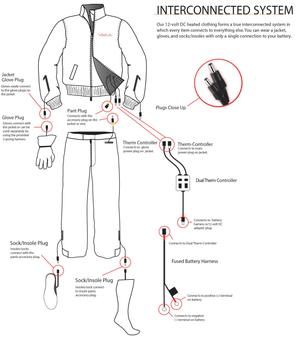
References – on the inside of the product tag attached to the garment is a layout diagram (like this one) that is a great keep-on-hand reference.
Connectivity/Interconnectivity – the direct jacket liner connection lead features a White band while the second one is unmarked (black)
Connectivity is not complex by any means, but for clarity of use both the White and now Blue banded circuits are marked on the Dual Therm Controller, the leads and the wireless remote; the (Red) top of the second circuit dial is now sporting a Blue marking.
There are three leads tucked into the small zippered storage pocket on the liner side of the lower left front:
- White Band lead to connect the jacket liner itself
- Black lead (now with a Blue Band) to connect the glove power plug as source for the sleeve to glove interconnectivity
- Yellow Band lead for connecting the pant/other plug as source for pants, socks, insoles, etc.
Wireless Remote Controller – the (optional) wireless controller is also dual-channel with two rotatable dials or bezel controls mounted on top. One is marked White, the other Red (now changed to Blue). There are no output setting LEDs on this piece.
Before use, this component needs configuring or pairing to work with the wired controller. Using the included single page instructions, the following steps are completed:
- Connect Red banded input to a power source (9v to 16V DC)
- Press both buttons on the Dual Therm Controller simultaneously – the jacket circuit LED flashes ‘A’
- One at a time, turn each knob (dial) on the Remote fully clockwise slowly – the Controller LEDs should display a number between 0 – 9 and ‘A’ indicating connectivity
- If the connectivity is confirmed, turn off the controllers/circuits and disconnect the power.
Output Management – whether using the wired Dual Therm Controller or the Wireless Remote, the user has ten (10) adjustable output levels or steps for each circuit or channel of the controller, from Off/0% to 100%.
Based on button input or rotation of the dials on the remote the wired controller LEDs should show 1 through 9 (10 to 90%) and ‘A’ = 100%. Note – the controller provided for this review only shows even output steps (2, 4, 6, 8 and A) on the LEDs…
Don’t’ forget to turn on the circuit or circuits using the Dual Therm Controller power buttons before use. Tip – make use of the ‘Last Memory Feature’ by disconnecting the input plug/power rather than turning the circuits off – this way the previous memory settings are restored upon next use.
Presuming the White banded circuit is already connected to the White banded lead on the jacket liner harness, the unmarked (now Blue banded) circuit from the wired controller is connectable to the second or (glove) input on the jacket liner harness.
This allows compatible pieces, like the Volt Heat Fusion 12V/7V Dual Source Leather Motorcycle Heated Gloves to be connected to the left and right sleeve harnesses for even more heated coverage.
Note – if using 12V/7V Fusion gloves and if you want the 7V glove batteries to charge from this 12V jacket liner to glove interconnect, then this output channel on the controller must be set to full (‘A’), so that trickle charging occurs. Setting this circuit to full output will not be an issue – just use the individual glove controller settings (Lo/Med/Hi) for output management.
You may find communications between the controller and wireless remote a bit slow at times regarding circuit adjustments, but it works.
There are two error conditions that may be displayed on the LEDs. If input is less than 11V a blinking ‘L’ is seen and, if over-current protection is enabled, a blinking ‘E’ is displayed. In either case check load and/or connections. The remote uses a standard CR2032 battery.
Installation & Safe Placement
Most users have or will take varying approaches to installing and housekeeping the various heated gear components. But the key objective of course is to have full use while maintaining a safe non-distracting riding environment.
Installation of wiring and controllers on the home fleet motorcycles is done to minimize exposure and maximize access. As such, the primary power lead with its weather-cap securely in place is tucked under the edge of the seat or perhaps secured to an accessible point on the trellis-style frame tubing.
From here it is an easy matter to connect the Dual Therm Controller that is positioned on the left side of the handlebar usually with a 3M Dual-Lock piece that may or may not be adhered to a RAM-B mount or more recently, to the left side of the BMW Navigation Cradle housing.
Either of the controller pieces can also be mounted to the space between the handlebar mounts to provide easy direct viewing when scanning the instrument cluster and for safe access with minimal distraction.
If the wireless controller is used (the norm) it becomes the externally placed management piece while the Dual Therm Controller and harnesses are tucked inside the tank bag, like the Mosko Moto Pico v2 (under review) with its convenient back access pass-through or, an accessible pocket of the jacket, usually the upper left chest one.
If laid out in this or a similar manner, it is a simple matter to disconnect the main power and dismount with the wired components either remaining on the motorcycle or going along with the rider.
On the Road with Heating for Health and Safety
To say the Volt Heat 12V Heated Jacket Liner is effective is an understatement. Its multiple heating inserts that cover most of the back area, left and right front areas of the chest, upper/lower arms and the neck provide encompassing upper torso warmth and comfort in spades.
I have used, reviewed and currently have two other brand heated jacket liners at hand (admittedly two to five years older than the Volt Heat garment) but still, none of them come even close to the heating experience provided by the Volt Heat 12V heated jacket liner.
As recommended, the jacket liner circuit is set to 20 percent or ‘2’ on the LED for pre-heating, before putting the wheels in motion. As speed builds, moving jacket liner output up to (four) or perhaps (six) provides an abundance of encompassing warmth with very few cold spots anywhere on the torso.
These settings work very well when ambient temperatures range from -5C to 12C (23 to 53.6F) depending on cockpit coverage and wind chill, with road speeds of 100 to 120km/h (62mph to 75mph) the norm.
As identified earlier, this is with the usual light base and a thin long-sleeved fleece as a mid-layer, then the heated jacket liner. The usual outer garment is the Rev’IT! Offtrack or KLIM Latitude jacket or when already wet out a well-aged but trusted double-layer MSR jacket.
On the cold rides where windchill is likely way into the minus range, a jacket liner setting of (eight) eliminates any niggling cold spots that tend to become apparent in these conditions.
But this or the maximum (10/A) setting is often used for a few minutes only as the under-jacket environment gets a bit warm; creating extra body moisture is not preferred for continued comfort. One spirited cold morning ride on an un-faired machine did see the (eight) setting used for most of the ride, allowing me to continue enjoying the ride.
Overall, typical running speeds, once out of the city or off the secondaries are between 100 to 120km/h (62mph to 75mph). The motorcycles used were the 2019 BMW F850GSA Rallye with its minimal profile windscreen on low, another F850GSA Exclusive with a large and quite good coverage windscreen, on low and high and, the Honda CB400F, which is truly open to the wind.
As the temperatures climb, usually by mid-morning or noon, the longer rides have the heated jacket liner maintaining a comfortable (but not snoozy) environment on the (four) setting or even less when slowing it down on the secondary routes or back in the city.
There is no hesitation here is stating that the Volt Heat 12V Heated Jacket Liner works extremely well, keeping the rider (yours truly) warm, comfortable, and alert; is this the safer way to go in the cold – yes. Would it be nice to have more of the Volt Heat garments available for the body – you bet.
Warranty & Product Support
Volt products are covered with a Lifetime Limited Warranty, and if purchased from www.Voltheat.com directly, a 30-day money back guarantee is included.
If a Manufacturer’s Defect is determined within the first year from original purchase, Volt Heat will replace or repair the product at no cost, less shipping back to Volt Heat. Batteries and chargers are covered for 90 days from purchase.
After the first year and for the lifetime of your product, a Warranty Processing Fees table identifies the warranty processing fees by product. The Volt Resistance Lifetime Limited Warranty can be downloaded for reference and use.
A Warming Conclusion
My introduction to Volt Heat and its diverse product listings, especially the motorcycle-oriented gear came about late last fall. Little did I know then just how positive and (warming) an experience using the Volt Heat products was going to be.
The Volt Heat 12V Heated Jacket Liner is one lightweight, comfortable, effective garment. With its durable outer nylon shell and insulating layer, when the outer layers come off, it is a casual out and about piece, especially with all the leads neatly tucked away in their pockets.
Connectivity and controls – the traditional wired controller module and related connections are or can be seen as a bother, but in taking time to keep things tucked away or mounted in safe spots and as an option, using the wireless controller, everything is kept out of the way for a managed safe environment.
For what it provides in the way of warmth and day-long comfort the Volt Heat 12V Heated Jacket Liner is very efficient with a manageable draw for most electrical systems. But, as always, know what your system limits are and govern connectivity and usage accordingly.
Will we see a 12V/7V Dual Source Heated Jacket Liner by then? I sure hope so – put me on the list for one.
The Bottom Line – Wear it, use its features, value it. The Volt Heat 12V Heated Jacket Liner outperforms, by a wide margin, anything similar tried, reviewed, or owned; its that good. And as such, given its competitive pricing, it is an outstanding investment in comfort, warmth, and safety. A highly recommended product.
And on a final note – nobody is escaping the impact of the COVID-19 pandemic. We are all in this together; we must look after each other. We will get out riding – live to ride, ride to live, but please, abide with applicable jurisdictional and social constraints. Stay healthy – Stay safe.
Pros
- 12V connectivity for optimal output and heating effectiveness
- Durable nylon shell and lining
- Lightweight insulation layering
- Zero Layer heating inserts are thin and pliable
- Multiple strategically placed heating inserts provide outstanding upper torso coverage
- Excellent cut, fit and comfort
- Dual Therm Controller with harness included – controls two garments
- Lifetime limited warranty (1-year standard, pro-rated beyond), 90-days batteries/chargers
- Worth the investment
Cons
- What, no pants, socks or insoles for an interconnected system…yet
Specs
- Manufacturer: Volt Heat
- Price when tested: $219.95 USD, or less; the Optional Wireless Controller is $19.95 USD
- Made In: China
- Colour: Black
- Sizes: Small, Medium, Large, XL and 2XL (see sizing chart)
- Warranty: Lifetime Limited Warranty (full details online) and 90-days on batteries/chargers
- Review Completion/Submission: 8 May 2020


